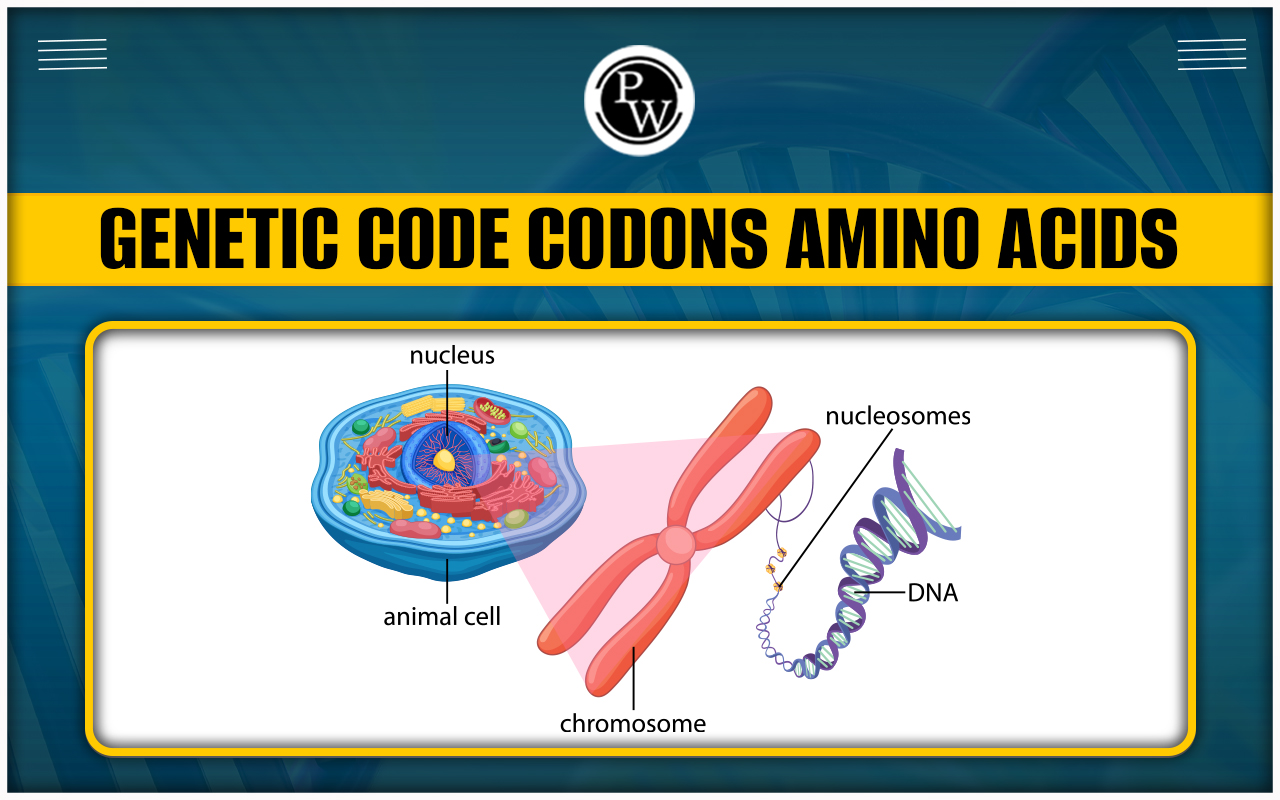

Genome And Genomics: The entire genetic material contained within the cells of a particular organism are called its Genome, and the study of this genome is called Genomics.
Operational genomics examines how the interaction of genes, intergenic areas of the genome, proteins, and metabolites produces a given phenotype. Depending on the area of interest, there are several functional genomics approaches in particular:- RNA level and DNA level (genomics and epigenomics) (transcriptomics)
- Protein content (proteomics)
- Metabolic rate (metabolomics)
Genetically Modified Organisms Ethical Issues
Genome And Genomics
This study of human chromosomes and genes is known as genomics. There are 24,000 genes and 23 pairs of chromosomes in the human genome. To better understand a patient's molecular biology, genome and DNA sequencing, which pinpoints the following of a DNA molecule, is used in medicine. Genetic variations and mutations are revealed by genomic analyses of the patient's genetic makeup. Instead of treating patients uniformly, each piece of information can be applied to create a care plan tailored to each participant's genetic makeup.Key Points
- The analysis of an individual's entire genome is known as genomics and contains concepts from genetics.
- Recombinant DNA Generation sequencing techniques and bioinformatics are all combined in genomics to identify, construct, and analyse the structure and functions of genomes
- By taking into account an organism's entire complement, its genetic material instead of just one gene or one associated protein at such a moment, it varies beyond "classical genetics."
- Since Fred Sanger's groundbreaking work and more current next-generation sequencing technology have provided an opportunity, genomics has taken advantage of the accessibility of whole DNA sequences from individual organisms.
Functional Genomics
- Genomics aims to understand how many parts of something, like a biological system, interact to generate a particular phenotype and how the many features of a biological system interact to produce a specific phenotype is the aim of functional genomics.
- Functional genomics emphasises the active transcription of all gene products in a particular context, such as during disease or a particular development stage.
- Researchers attempt to create a model connecting genotype to phenotype in genomic information using our present understanding of genetic variants.
- DNA scale (genomics and epigenomics)
- RNA quantity (transcriptomics)
- protein content (proteomics)
- Metabolic rate (metabolomics)
Drug Research
Characterizing the progression of the disease and identifying pharmacological (or "therapeutic") targets is the first phase of this drug discovery process. An "objective" in this context is a protein or RNA molecule that, when altered by medication, positively influences the overall course of a disease. Less than 10% of candidate proteins in conventional drug discovery pipelines prove viable after spending millions of dollars and between six and seven years of labour. In phase II clinical trials, more than 50% of medications fail due to a lack of efficacy; these compounds are safe for humans, bind to the desired target, and have drug-like features (such as a tolerable half-life inside the human body), although they have little or no effect on the condition.Functional Genomics as a Tool for Assisting Drug Discovery
The drug companies have been desperate to lower the astounding rate of target failure in the pipeline for drug research. The discovery and selection of possible destinations can be improved, allowing drug development companies to concentrate on more promising candidate targets immediately. In this regard, the outcomes of various functional genomics investigations can offer data or support for the association between possible targets and the disease they are connected with.- DNA level (epigenetics, sets of physical variation, single DNA polymorphisms (SNPs))
- RNA quantity (gene expression microarrays and RNA-seq)
- (Genetic material interactions, such as ChIP-seq)
Genetic Code Codons Amino Acids
Operational Genomics in Research into Cancer
For cancer research, genome-wide association studies have been very helpful in guiding medication discovery. For instance, Herceptin was created in response to the finding that the HER2 gene is overexpressed in specific forms of breast cancer (The HER2 Journey). High-throughput- throughput sequencing investigations and conceptual of data and breast carcinoma cells have lately revealed numerous more targets for which already-existing medications can be repurposed, significantly increasing the speed of drug discoveryGenome
Coming up with a concise definition of "genome" is exceedingly challenging. It can be hard to choose which molecules to include in the definition; for instance, bacteria typically include one or two large DNA molecules (chromosomes), which consist of all of the necessary genetic material, but they also have smaller extrachromosomal plasmid particles that carry crucial genetic information. The term typically refers to the DNA (or occasionally RNA) molecules that carry the specific genes in an organism. The term "genome" is typically used to refer to the massive chromosomal DNA molecules found in bacteria in scientific literature.Viral Genomes
DNA or RNA can be found in the viral genome. RNA viruses have single-stranded or even double genomes that may include one or maybe more distinct RNA molecules (segments: monopartite or multipartite genome). Single-stranded or even double genomes are both possible for DNA viruses. A linear, straight DNA molecule comprises the majority of DNA genomic sequences, although some DNA viruses also contain circular DNA molecules.Prokaryotic Genomes
DNA genomes are found in prokaryotes and eukaryotes. A circular shape chromosome is present in archaea, and the majority of bacteria, but certain bacterial species contain linear or numerous chromosomes. Extra copies of a chromosome can exist within a single bacterial cell if DNA replication proceeds more quickly than cell division. If DNA replication proceeds more quickly than cell division, various replications of the genetic code are started before cell division, allowing the parent cell to inherit fully assembled genomes and probably largely replicated chromosomes. The genomes of the majority of prokaryotes contain very little repetitive DNA. Only around 40% of certain symbiotic bacteria's DNA encodes proteins, such as Serratia symbiotica , which has a small genome and a high percentage of pseudogenes.Eukaryotic Genomes
One or even more DNA Molecules chromosomes make up a eukaryotic genome. Chromosome counts range considerably, from one pair in Jack jumping ants and an asexual nematode to 720 pairs in one fern species. Compared to other genomes, the quantity of DNA eukaryotic genomes include is astounding. Because eukaryotic genomes can vary by up to 64,000-fold, the quantity is even greater than size by up to 64,000-fold, and the amount is even more significant than what is required for DNA nutrient and non-protein-protein-protein-coding protein-coding protein-coding protein-coding genes. However, transposons (TEs) and repeating DNA contributed to this unique trait.Difference Between DNA and RNA
DNA Sequencing
Everyone can sequence to construct new genomes due to high-throughput technology. While assessments of covering the depth and mapping topology might reveal insights regarding anatomical differences, including chromosomal translocations and segment duplication of work, sequence polymorphisms are normally discovered by comparing provides isolates to a standard.Genome And Genomics <span style=
1. What distinguishes (human) genetics from genomics?
Genetics examines specific genes or segments of genes with known functions, such as how they are handed down from generation to generation, what diseases they cause, or how they impact a person's response to medication. Genetic interactions with the environment and the complete genome, or set of genes, are the subject of genomic research. Because cancer is brought on by detrimental alterations in certain genes, some of which are inherited and some of which are acquired, genetics and genomics are crucial to oncology.
2. What are Genetic disorders?
A genetic disorder is a condition where the DNA sequence has been altered to deviate from the typical sequence, either whole or in part. Monogenic illnesses, multifactorial inheritance disorders, combinations of gene mutations and environmental influences, and chromosomal damage are some possible causes of genetic abnormalities.
3. How can I learn more about a specific genetic disorder?
Genetic tests analyse a person's DNA to predict their risk of a particular disease, identify the precise reason for cell changes, or determine whether they have any hereditary disorders. A small quantity of saliva or a blood sample is often used for testing. Only a small number of diseases can now benefit from genetic testing. Genetic testing may only be carried out in specific circumstances since the outcomes may have an impact on job or health insurance status, as well as on offspring and siblings.
4. What do genetic services entail?
A genetic counsellor will discuss the following: based on your family history.
Your likelihood of developing particular genetic disorders or alterations.
Consider the cost, insurance coverage, and genetic testing.
What the test results may or may not reveal.
how likely it is that you will pass the genetic condition on to your offspring.
Talk to a counsellorHave doubts? Our support team will be happy to assist you!

Check out these Related Articles
Free Learning Resources
PW Books
Notes (Class 10-12)
PW Study Materials
Notes (Class 6-9)
Ncert Solutions
Govt Exams
Class 6th to 12th Online Courses
Govt Job Exams Courses
UPSC Coaching
Defence Exam Coaching
Gate Exam Coaching
Other Exams
Know about Physics Wallah
Physics Wallah is an Indian edtech platform that provides accessible & comprehensive learning experiences to students from Class 6th to postgraduate level. We also provide extensive NCERT solutions, sample paper, NEET, JEE Mains, BITSAT previous year papers & more such resources to students. Physics Wallah also caters to over 3.5 million registered students and over 78 lakh+ Youtube subscribers with 4.8 rating on its app.
We Stand Out because
We provide students with intensive courses with India’s qualified & experienced faculties & mentors. PW strives to make the learning experience comprehensive and accessible for students of all sections of society. We believe in empowering every single student who couldn't dream of a good career in engineering and medical field earlier.
Our Key Focus Areas
Physics Wallah's main focus is to make the learning experience as economical as possible for all students. With our affordable courses like Lakshya, Udaan and Arjuna and many others, we have been able to provide a platform for lakhs of aspirants. From providing Chemistry, Maths, Physics formula to giving e-books of eminent authors like RD Sharma, RS Aggarwal and Lakhmir Singh, PW focuses on every single student's need for preparation.
What Makes Us Different
Physics Wallah strives to develop a comprehensive pedagogical structure for students, where they get a state-of-the-art learning experience with study material and resources. Apart from catering students preparing for JEE Mains and NEET, PW also provides study material for each state board like Uttar Pradesh, Bihar, and others
Copyright © 2025 Physicswallah Limited All rights reserved.











